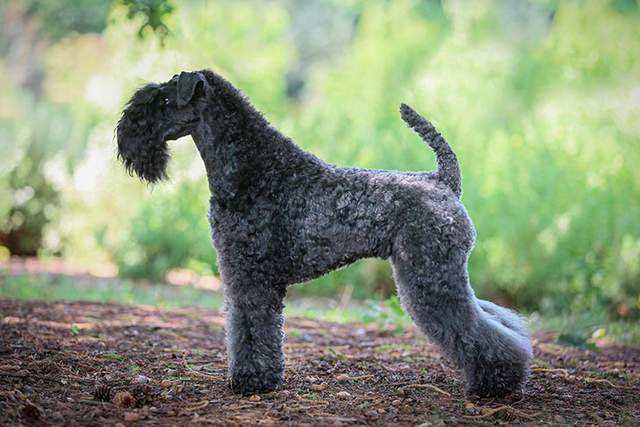Kerry Blue Terrier
IUCN
LCBasic Information
Scientific classification
- name:Kerry Blue Terrier
- Scientific Name:Irish Terrier
- Outline:Carnivora
- Family:Canidae
Vital signs
- length:46cm
- Weight:15kg
- lifetime:12-18year
Feature
The Kerry Blue Terrier has many talents and an instinct to track and retrieve prey. It is suitable for all forms of work, easy to train, and has an indomitable spirit that is difficult for a guard dog to surpass.
Distribution and Habitat
Originally from Ireland
Appearance
The head is long but not excessive. The ears are V-shaped and well proportioned, of moderate thickness, rising from the fold of the skull and hanging down to the cheek. The eyes are small and dark, with a keen terrier character. The nose is black, with large and wide nostrils. The teeth are white and strong, with a scissor bite. The neck is well-proportioned and of moderate length. The chest is thick and of moderate width. The back is short, strong and straight. The tail is high and of moderate length, standing vertically to the ground, and the more upright the tail is, the better. Both the front and rear legs are straight and powerful, the feet are closely connected and of moderate size. With thick pads, it makes no sound when walking, and the toes are arched, neither turning in nor out.
The blue fur is its typical feature. The Kerry Blue Terrier is born black when it is young.
Details
The Kerry Blue Terrier, also known as the Irish Terrier, is the national dog of Ireland. It originated in County Kerry, Ireland in the 19th century. Its blue fur is its typical feature. There is also a legend that after escaping from the wrecked Spanish Armada in 1588, it drifted to the coast of Ireland and became a descendant of the Spanish dog line. Some people also believe that the Kerry Blue Terrier is a breed developed from the bloodline of a fairly large Irish Wolfhound.

The Kerry Blue Terrier originated in Ireland and was named after the Blue Hills of Kerry where it first attracted attention. Previously, it was used in Ireland and England mainly to catch game and various birds, retrieve game caught in the water or in the wild, and also to herd cattle and sheep. The Kerry Blue Terrier made its first important appearance in Westminster in 1922. The Kerry Blue Terrier was then trained and educated into a dog with various characteristics. In 1924, the American Kennel Club recognized the Kerry Blue Terrier as a champion-level dog.
During the Westminster Dog Show in 1926, some breeders formed the American Kerry Blue Terrier Club at Waldorf Astora. The purpose was to encourage the breeding of Kerry Blue Terriers and feed them into high-quality application and sporting dogs. By 1928, the breed had become popular around the world with its excellent sense of balance and gorgeous soft blue coat. Its reputation as an excellent working dog and companion dog was recognized by the dog breed evaluation agency, calling it "nearly perfect." In 1963, the Kerry Blue Terrier was officially recognized by the FCI as an independent breed, and today they are still very popular breeds around the world.
The Kerry Blue Terrier is gentle, energetic and smart, loyal to its owner, but also naughty and occasionally "emotional". It is very vigilant and has a strong sense of defense against strangers and other animals. It occasionally attacks animals that "illegally" enter its territory.
The Kerry Blue Terrier has many talents and the instinct to track and retrieve prey. It is suitable for all forms of work and is easy to train. It has an indomitable spirit and is difficult for guard dogs to surpass it. In the history of England, the Kerry Blue Terrier was competent for the work of a police dog. If it is well raised and managed, and has special food and designated training, the Kerry Blue Terrier has a long life span and is still loyal to its duties when it is close to old age. In fact, the Kerry Blue Terrier between 6 and 8 years old is still considered a young dog. The Kerry Blue Terrier is a very athletic dog, so they need a lot of nutritious food.
Protect wild animals and stop eating game.
Maintaining ecological balance is everyone's responsibility!








